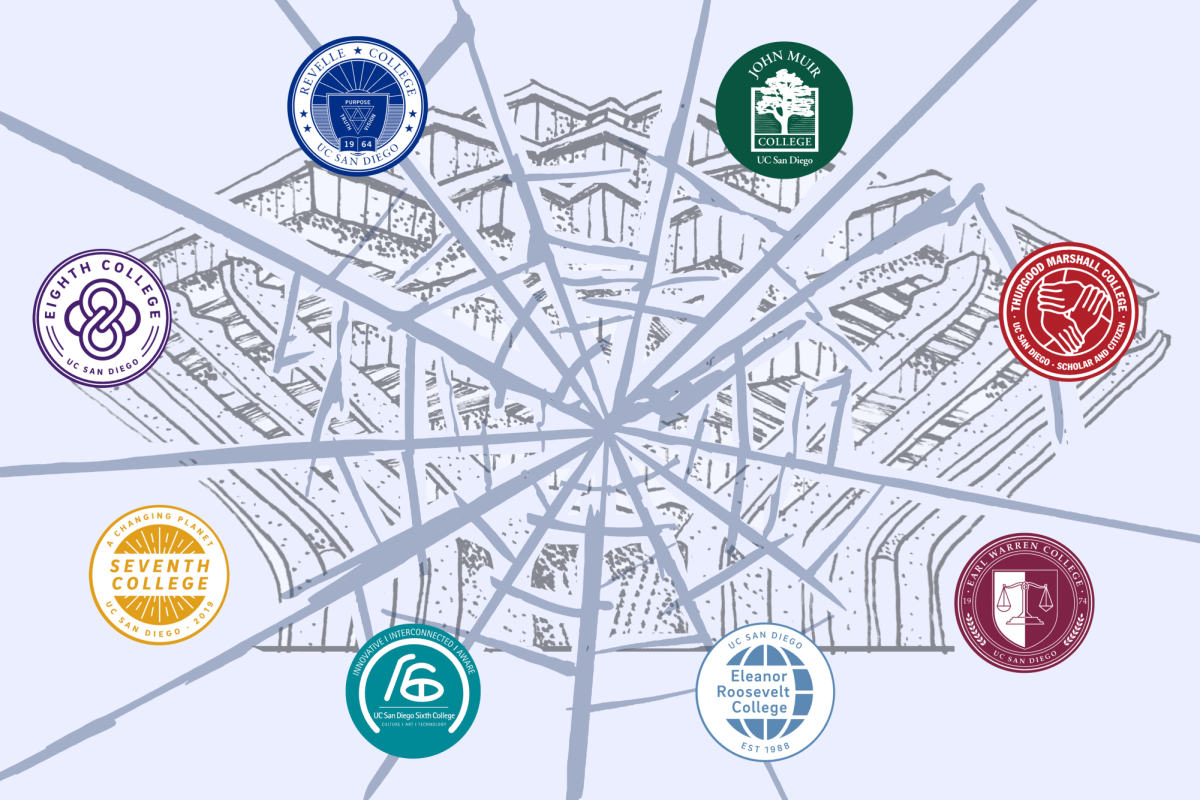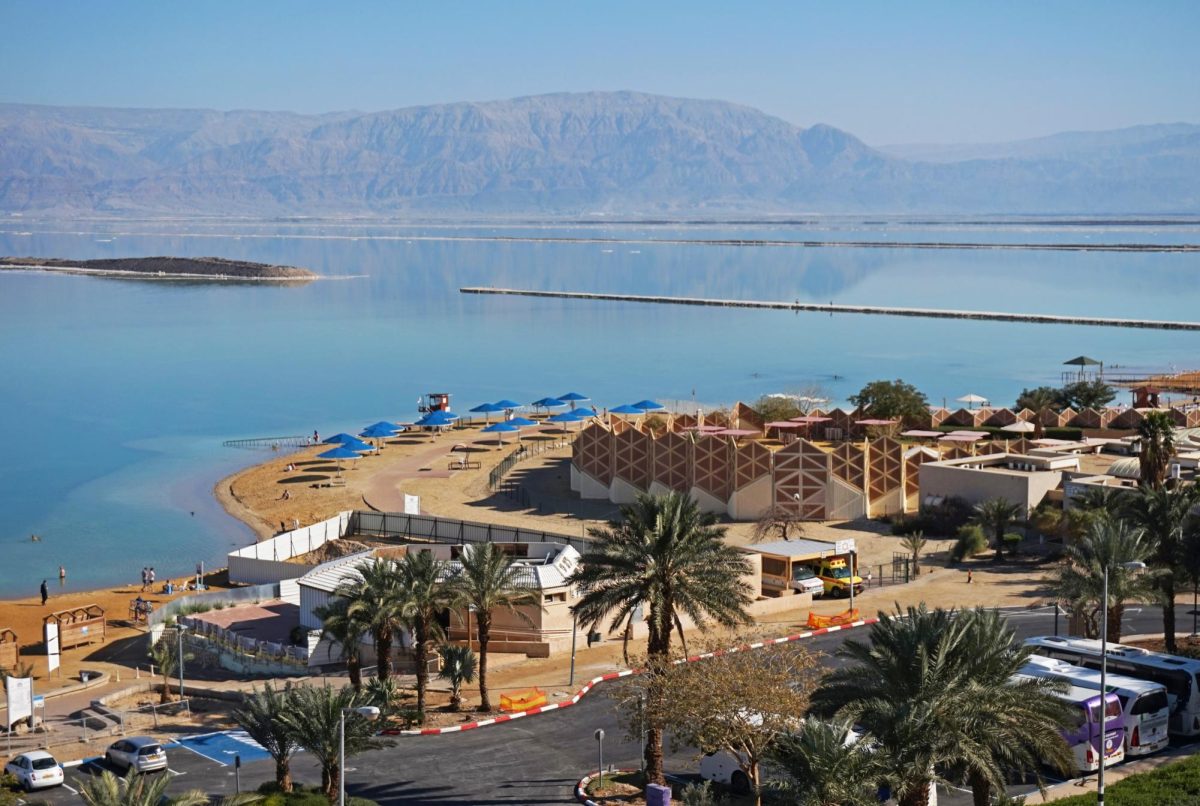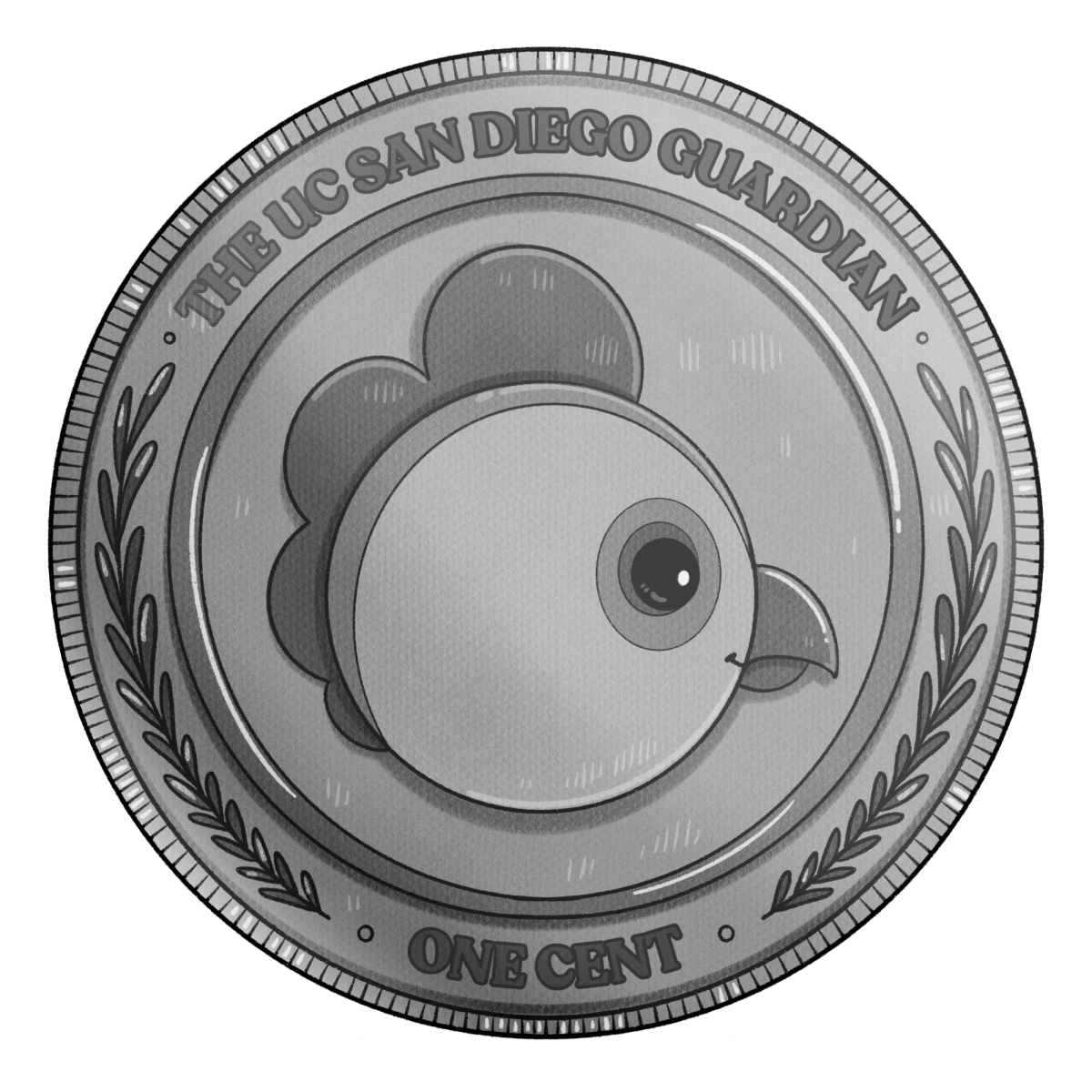UC San Diego has long grappled with the stigma of being “socially dead” — a reputation perpetuated by comparisons to other schools in the University of California system. While UCLA is celebrated for balancing its rigorous academics with student pride and UC Santa Barbara is renowned for its lively party culture, UCSD is frequently cast into the shadows. Some blame our abysmal student culture on our intensive STEM-centered curriculum or our proximity to San Diego State University — a school known for drawing students seeking a more “traditional” college experience. These narratives create a self-fulfilling prophecy that reinforces UCSD’s fragmented student culture. In actuality, it is the structural features unique to UCSD — not the student body itself — that perpetuate the University’s “socially dead” reputation.
Although UCSD boasts that its unique college system fosters a tight-knit community and makes a large campus feel more approachable, this system creates division. Each college has its own general education curricula, residential communities, and dining facilities. The physical and academic segregation of students from different colleges disincentives interaction between students outside their own community, creating cliquey social bubbles rather than campus cohesion and reinforcing artificial barriers among students that hinder community building.
Moreover, UCSD’s expansive campus — stretching over 1,000 acres in La Jolla — can feel overwhelming and unapproachable. Residential facilities are often located far from central campus locations, which exacerbates UCSD’s inaccessibility. Furthermore, the incohesive campus layout deters students from leaving their dorms to socialize with others. For students living on the outskirts of campus — like those in Seventh College — a trip to central hubs, like Geisel Library or Price Center, often means a 20-minute trek, making everyday campus life feel disconnected and inconvenient.
For off-campus and commuter students, construction projects and limited parking options create barriers to participation in campus life. Consequently, students are forced to think twice before attending campus events, joining extracurricular activities, and even attending their classes, worsening the sense of detachment many students feel. The administration’s apparent focus on profit, seen in increased fees and never-ending construction aimed at expanding enrollment, comes at the cost of student experience. Instead of fostering connection and student body pride, these decisions erode what little remains of UCSD’s fragile student culture.
While many regard this unfortunate reputation as a harmless joke, it reflects a deeper cultural issue that negatively impacts students’ sense of belonging and college experience. When our student body is perceived as lacking spirit and engagement, it creates a feedback loop whereby low expectations discourage participation, perpetuating the narrative we are trying so desperately to escape.
Additionally, this reputation is unfairly burdensome on the student body, labeling it as apathetic or disinterested when it is actually held back by structural forces. Student enthusiasm was showcased during UCSD men’s and women’s basketball’s historic appearances in March Madness, when school pride visibly surged and the campus was united in shared excitement and community. Dismissing the issue or blaming the student body ignores the structural barriers that reinforce this narrative surrounding UCSD’s culture; factors like the fragmented college system or our inaccessible campus layout actively undermine the development of a cohesive, lively student body. Understanding the root cause of this apparent “deadness” is essential to shift the reputation and prompt meaningful changes that prioritize student experience and connection.












Andy Fee • Oct 9, 2025 at 9:41 pm
Thank you for this thoughtful piece. As the Athletics Director, I was thrilled to see you mention the incredible energy during our March Madness runs — those moments proved that Triton spirit is alive and ready to ignite when given the opportunity. Our athletic events are designed to be exactly the kind of accessible, unifying experiences that can break through the structural barriers you’ve described. Whether it’s basketball, volleyball, soccer, or any of our 24 varsity sports, games offer a welcoming space where students from all colleges can come together, build lasting connections, and create the shared memories that define the college experience. To every student feeling disconnected or searching for community: you belong here, and our doors are always open. Come experience the energy of cheering alongside your fellow Tritons — no matter which college you’re from or where you live. Let’s keep building the pride we felt in March Madness all year long.
Go Tritons!
Reanna Robelin • Jun 9, 2025 at 12:30 pm
Lauren, I really appreciate this article. The more I learned about the history of UCSD’s beginnings and ties to the military industrial complex, it’s racially divisive location in La Jolla, and the administration’s response to student needs in my HILD classes and upper divs, the more I understand that part of this reputation has been purposefully curated out of suppression.
Even the college-breakup design was meant to discourage organizing, protesting, and student unity through architectural and psychological decentralization. The fact is, if UCSD shared the same kind of regular spirit and everyday socialite lives as SDSU, combined with our flares of energy around political organization (see Herbert Marcuse, Thurgood Marshall College’s roots, building occupation, etc.) it would completely threaten the so-called “riot theory,” which the campus was built around post-Berkley. Justin Cho, and other professors at the school have some interesting evidence for why this isn’t just a conspiracy and the school’s makeup and reputation is intentional to suppress community and depoliticize the campus.